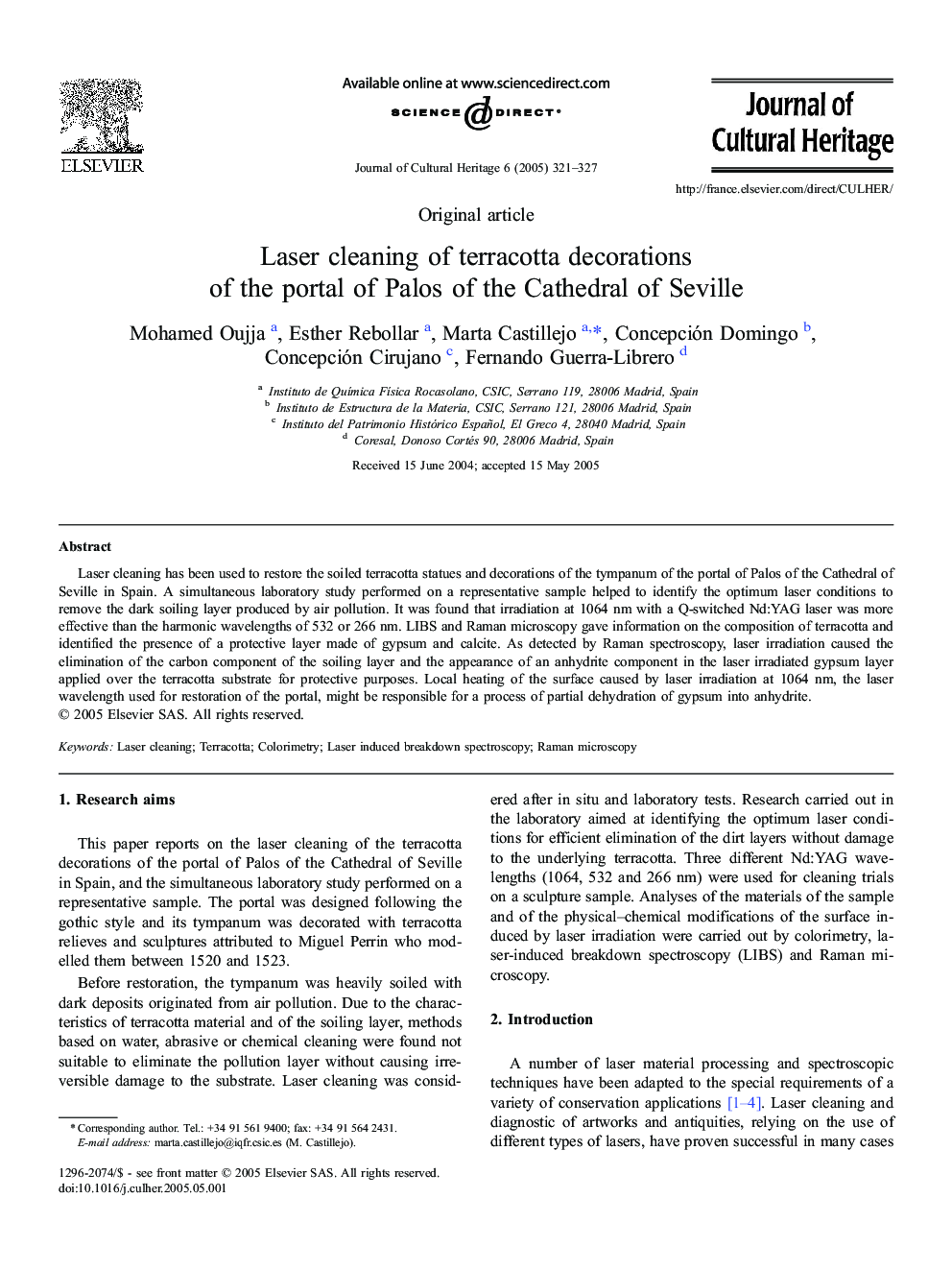| Article ID | Journal | Published Year | Pages | File Type |
|---|---|---|---|---|
| 10500052 | Journal of Cultural Heritage | 2005 | 7 Pages |
Abstract
Laser cleaning has been used to restore the soiled terracotta statues and decorations of the tympanum of the portal of Palos of the Cathedral of Seville in Spain. A simultaneous laboratory study performed on a representative sample helped to identify the optimum laser conditions to remove the dark soiling layer produced by air pollution. It was found that irradiation at 1064Â nm with a Q-switched Nd:YAG laser was more effective than the harmonic wavelengths of 532 or 266Â nm. LIBS and Raman microscopy gave information on the composition of terracotta and identified the presence of a protective layer made of gypsum and calcite. As detected by Raman spectroscopy, laser irradiation caused the elimination of the carbon component of the soiling layer and the appearance of an anhydrite component in the laser irradiated gypsum layer applied over the terracotta substrate for protective purposes. Local heating of the surface caused by laser irradiation at 1064Â nm, the laser wavelength used for restoration of the portal, might be responsible for a process of partial dehydration of gypsum into anhydrite.
Related Topics
Physical Sciences and Engineering
Chemistry
Physical and Theoretical Chemistry
Authors
Mohamed Oujja, Esther Rebollar, Marta Castillejo, Concepción Domingo, Concepción Cirujano, Fernando Guerra-Librero,
